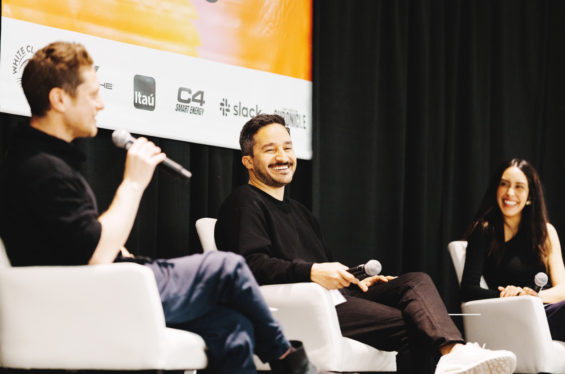Tours by Latin artists have reached new heights in the past year.
Bad Bunny closed out 2022 with a record-breaking $435 million in tour grosses, thanks to his El Ultimo Tour del Mundo and World’s Hottest Tour treks. Rosalía graduated from clubs to arenas, becoming an international touring powerhouse with her global Motomami Tour.
And it’s not just current hitmakers that are riding the wave. It’s also legacy acts such as Los Bukis, who embarked on a historic reunion stadium tour in 2021. And newcomer Feid, who was able to sell out his first U.S. tour in a span of 24 hours.
Now, RBD‘s upcoming Soy Rebelde Tour is poised to be one of the biggest tours of the year. The Mexican pop group’s first trek in 15 years — produced by Live Nation and the band’s manager Guillermo Rosas (also CEO of T6H Entertainment) — the tour has so far sold more than 1.5 million tickets and is filling stadiums and arenas across the world.
The topic on the influence of Latin artists on global touring took center stage at SXSW this year during a panel moderated by Billboard‘s Griselda Flores, senior writer, Latin. In a conversation with Rosas and Hans Schafer, svp of global touring at Live Nation, the one-hour fireside chat examined how tours by Latin artists continue to reach new markets and new audiences.
Below, five takeaways from the panel:
Many factors have contributed to the surge in touring numbers for both established artists and newcomers
Schafer: “For me, this [growth] has been happening for the past 15 years. English radio stations playing Spanish-language music now. The ability to access music that’s happening across the country or across the world. All those factors have contributed to this growth. It’s an exciting time.”
Rosas: “Although television has changed so much, there’s also a value that we can attribute to television. Series featuring Latin artists, such as RBD, were being viewed by audiences who didn’t speak Spanish. It became a trend to learn how to speak Spanish so you could understand the show, and it opened a lot of opportunities for Latin music in general in countries like Brazil or Eastern Europe. There are many different variables but that’s definitely one of them.”
Big tours, not big “Latin” tours
Schafer: “You look at the tours and the results that they’re giving — sure you can break them out into their own, ‘This is the No. 1 Latin tour.’ But when you look at the top 10 [of all tours], they’re in there. They’re in there worldwide, in North America, they’re surpassing a lot of artists in South America, an area that generates a lot of money. When you talk about the importance of global touring for all acts, a huge chunk is in Spanish-language countries. We’re now able to capture the data. It’s giving us the respect and the place of how important those markets are, the purchasing power we have and the impact that the Latin acts have.”
Rosas: “We have as example, Mexico, Brazil and Colombia where you have major international acts like Coldplay that held records in stadiums in Latin America. RBD came and broke all of them. In Colombia, RBD is doing four stadiums in a row, sold out. No other artist in the world has done that. Latin artists are capable of doing massive numbers.”
RBD’s reunion tour: Go big or go home
Rosas: “It was one of those reunions that was bound to happen at some point. It’s a complex structure, because there are so elements surrounding it — their individual careers, independent careers. Hans and I always had a vision that it would be successful when the time came. Because we do believe in the size of it, the first strategy was to make it big. If you go to a small arena, then you give the impression that it’s a small tour — but if you have a partner like Hans that believed in it, then we announced stadiums, and people understand that it’s going to be a big tour. A lot of promoters are scared of doing that, but you only have one opportunity for a first impression in this business. Because it’s such a big cultural movement, we needed to do it like that: add to the excitement and emotion.”
Nostalgia tours are having a moment
Rosas: “It is a cultural movement — RBD is bigger than its music. It’s part of growing up with it, and [in terms of] friendship, it’s a big reunion. All these people will get together after 15 years, some that haven’t seen each other in years, and RBD is the connection. It brings you back to amazing memories of childhood or teenage years. And it makes you happy. Los Bukis has a similar story. People grew up with the music, and that’s all you listened to in Mexico back in the day. To bring it back, it brings those emotions back to life. Hans and I worked on the Versus Tour in 2016 with Alejandra Guzmán and Gloria Trevi — we played on nostalgia. It was massively successful.”
Promising markets for Latin artists
Schafer: “We’ve seen that Europe has shifted in terms of the ability of going a little bit outside the box of your traditional market would be. Spain is the anchor for a lot of these acts to go out there. More and more, the U.K., France, Italy. You’ve seen more stuff in Poland, we’ve done shows in Tel Aviv. It’s the best time for a Latin artist. Musically and from touring-wise, you have the ability to go pretty wide, and if you have the right team, you can build a real career outside of traditional markets. I’m also excited about Australia and Japan — really the outskirts of the world that we haven’t hit [where] I know there’s a market.”
You can listen to the entire conversation here.




